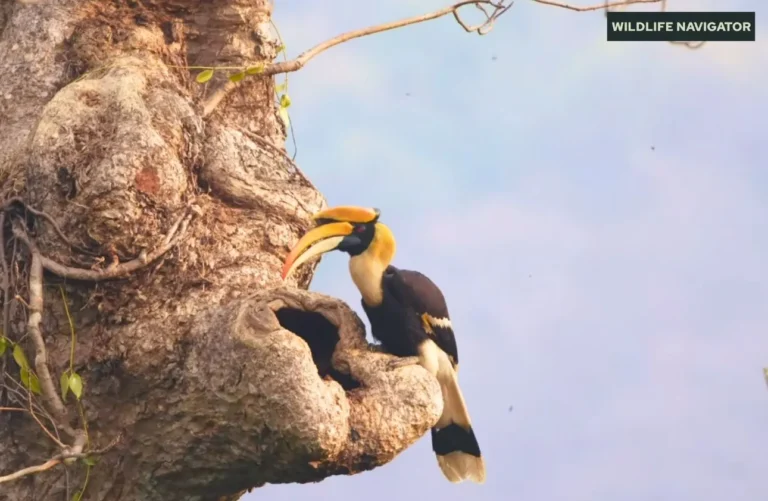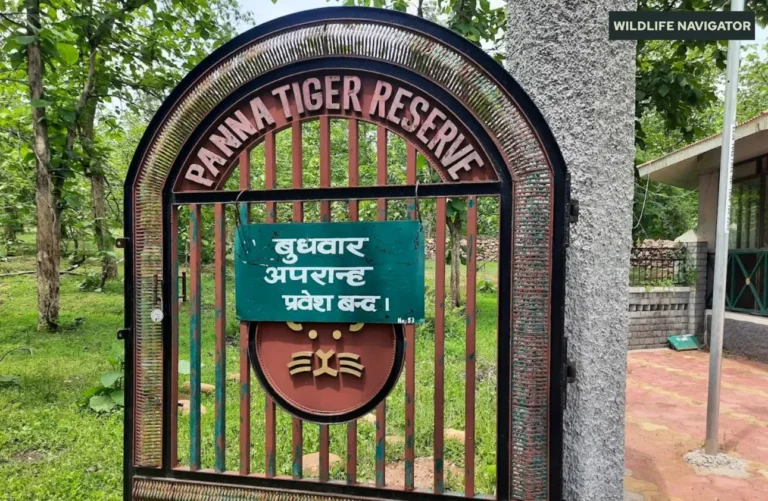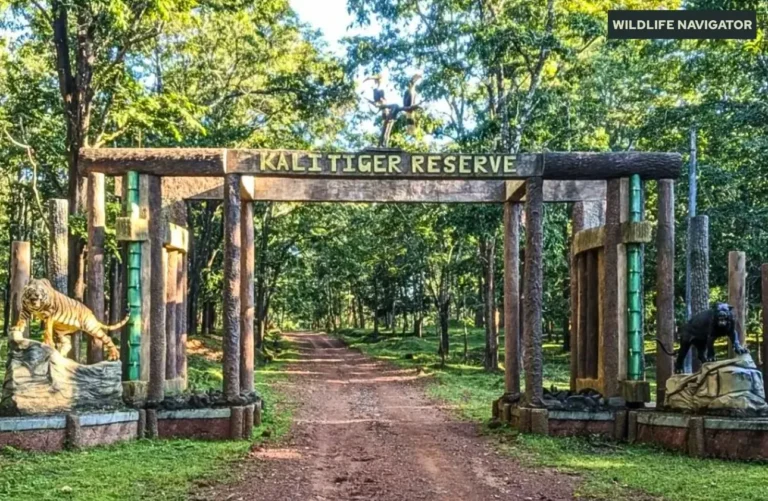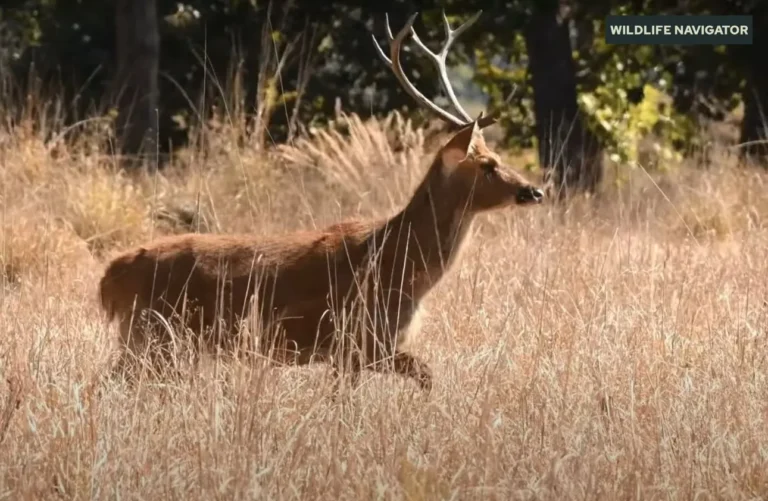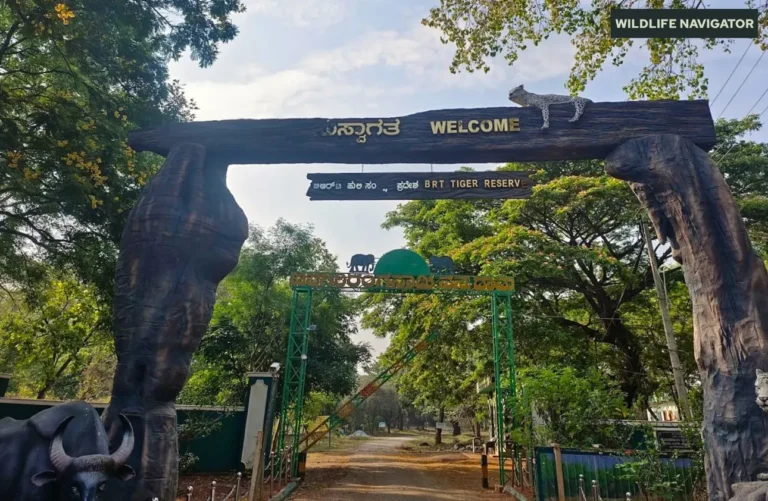Raimona National Park: Assam’s Gem in the Himalayan Foothills
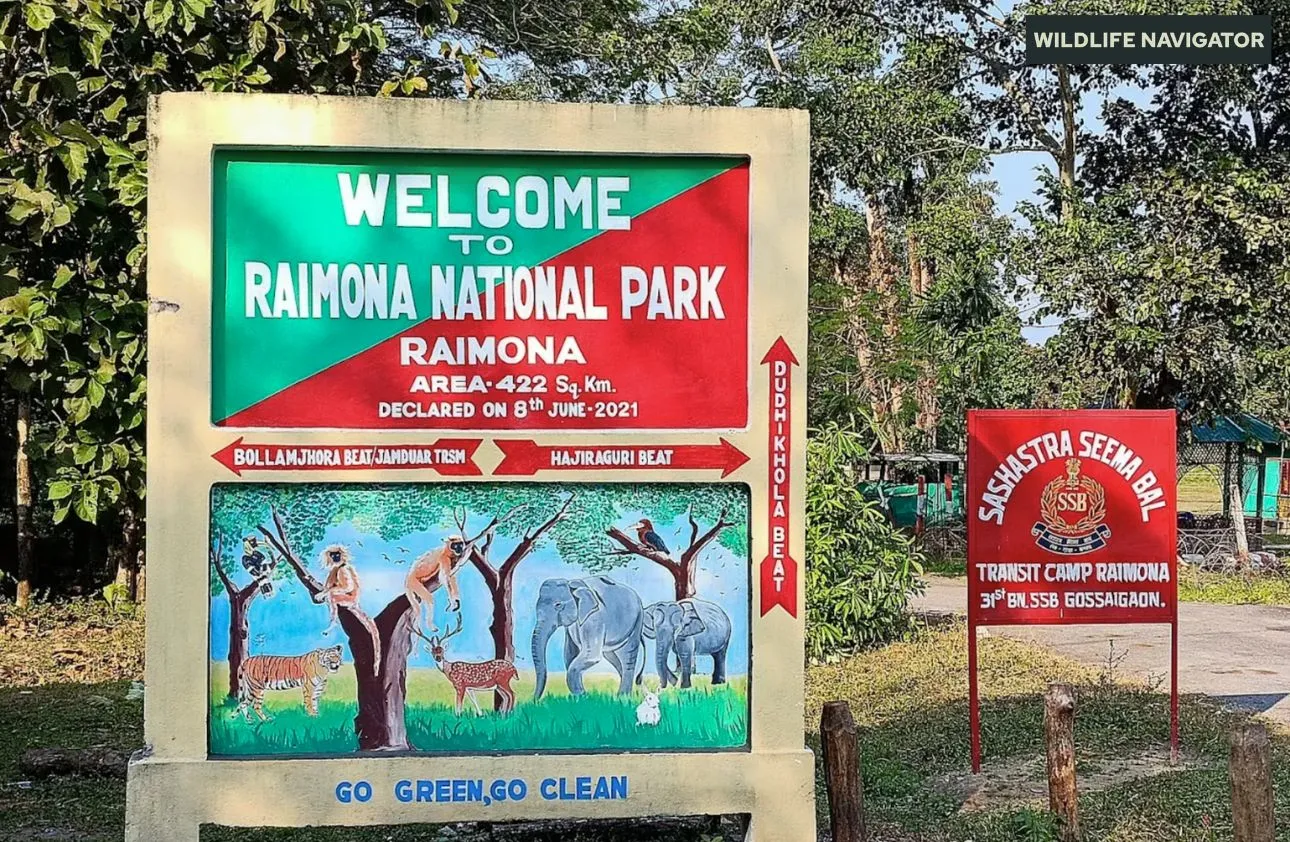
Raimona National Park is one of the newest protected areas in Assam and a rising gem among national parks in India. Located in the western part of the state, it forms a vital ecological corridor in the Eastern Himalayan biodiversity region. Officially declared a national park in 2021, Raimona plays a crucial role in safeguarding rare and endangered species while strengthening transboundary conservation efforts.
Spread across the rich forest landscapes of the Bodoland Territorial Region, Raimona is known for its pristine wilderness, lush riverine ecosystems, and unique wildlife—especially the endangered Golden Langur, which serves as the park’s flagship species. Its strategic location adjoining Bhutan’s Phibsoo Wildlife Sanctuary makes it part of an important international conservation landscape.
As India continues to expand and reinforce its network of national parks in India, Raimona stands out as a symbol of modern conservation, indigenous community participation, and sustainable ecotourism potential in the Northeast. It offers nature lovers and wildlife photographers an opportunity to explore untouched habitats, thriving biodiversity, and the rich cultural heritage of the Bodo community.
History and Establishment
History
Raimona National Park was officially notified in June 2021, making it one of the newest additions to Assam’s protected area network. The region, however, has long been ecologically significant due to its dense forests and role in supporting wildlife movement between India and Bhutan.
Earlier part of the Ripu Reserve Forest, the area was recognized for its biodiversity and strategic conservation value. Years of efforts by environmentalists, forest officials, and local Bodo communities paved the way for its upgrade to national park status. The declaration aimed to enhance protection for the Golden Langur, elephants, big cats, and many other species dependent on its intact forest cover.
Establishment
Raimona’s establishment also contributed to a broader conservation vision by creating a transboundary conservation landscape connecting Assam’s Manas Tiger Reserve with Bhutan’s Phibsoo Wildlife Sanctuary. This move strengthened wildlife corridors, supported cross-border species movement, and positioned the park as an emerging stronghold for biodiversity in Northeast India.
Geography and Landscape
Raimona National Park lies in the Kokrajhar district within the Bodoland Territorial Region of Assam, forming an ecologically rich gateway to the Eastern Himalayan foothills. The park spans over 422 sq km and sits adjacent to Bhutan, creating a seamless forested boundary that supports free movement of wildlife across borders.
The Sankosh River forms the western boundary of the park, acting as a natural divider between Assam and West Bengal. To the north, the landscape rises toward Bhutan’s Phibsoo Wildlife Sanctuary, while to the east it connects with Manas Tiger Reserve, making Raimona part of one of Northeast India’s most important transboundary ecological corridors.
Raimona features a diverse terrain made up of sal forests, tropical semi-evergreen forests, riverine belts, bamboo brakes, and patches of grasslands. The region experiences a humid subtropical climate, with cool winters and warm, rainy summers that nourish its dense vegetation. Its undisturbed rivers, forest streams, and rolling forest tracts create an ideal habitat for elephants, primates, big cats, and a wide variety of bird species, making it a thriving natural ecosystem in Assam’s protected landscape network.
Flora of Raimona National Park
Raimona National Park boasts lush Eastern Himalayan foothill vegetation, combining dense sal forests, bamboo brakes, and riverine ecosystems that support rich biodiversity. The park’s varied plant communities form layered habitats—towering canopy trees, thick undergrowth, and grasslands—creating ideal shelter and food sources for herbivores, primates, and pollinators. This intact vegetation also protects soil, regulates water systems, and maintains ecological connectivity across the India–Bhutan landscape.
Major Forest Types
- Tropical moist deciduous forests
- Semi-evergreen forests
- Sal (Shorea robusta) dominated forests
- Riverine and alluvial forests
- Bamboo brakes and cane thickets
- Grasslands and marshy patches
Key Tree Species
- Sal (Shorea robusta)
- Simul (Silk Cotton Tree)
- Khair
- Sissoo
- Gamari
- Teak (in patches)
- Various fruit–bearing trees supporting wildlife
Bamboo & Cane
- Bhutanese Bamboo (a major feature)
- Cane species along riverbanks and moist soil zones
Medicinal & Aromatic Plants
- Wild medicinal herbs
- Aromatic climbers and shrubs
- Indigenous medicinal plant varieties used by local communities
Ground & Understory Plants
- Grasses and shrubs
- Climbers and vines
- Seasonal flowering plants
- Ferns and mosses in moist areas
Raimona’s diverse plant life not only supports endangered wildlife but also enriches the ecological value of the national park, making it an essential green corridor in Northeast India.
Fauna of Raimona National Park
Raimona National Park is a thriving habitat for rare, endangered, and charismatic wildlife species, making it an important conservation zone in Northeast India. Its dense forests and strategic location connecting Manas Tiger Reserve and Bhutan’s Phibsoo Wildlife Sanctuary support healthy populations of large mammals, primates, and diverse birdlife.
The park is globally recognized for being a stronghold of the endangered Golden Langur, which is considered the cultural symbol of the region and one of the rarest primates on earth. Elephants frequently traverse the forest corridors, and predators like leopards and tigers inhabit the deeper forest tracts. Birdwatchers also value Raimona for its rich avifauna, including hornbills, raptors, and migratory species.
Key Mammals
- Golden Langur (flagship species)
- Asian Elephant
- Bengal Tiger
- Leopard & Clouded Leopard
- Gaur (Indian Bison)
- Wild Buffalo
- Hog Deer
- Barking Deer
- Wild Boar
Primates
- Golden Langur
- Capped Langur
- Assamese Macaque
- Slow Loris
Notable Birds
- Great Hornbill
- Pied Hornbill
- Wreathed Hornbill
- Crested Serpent Eagle
- Emerald Dove
- Various migratory ducks and forest birds
Reptiles & Others
- Indian Rock Python
- King Cobra
- Monitor Lizards
- Various amphibians and insects
This rich wildlife diversity positions Raimona as an emerging hotspot for wildlife tourism and conservation in Northeast India.
Conservation Efforts
Raimona National Park represents a modern conservation success story in Assam, driven by government initiatives, scientific planning, and strong support from local Bodo communities. Since its declaration in 2021, focused measures have been taken to restore habitats, secure wildlife corridors, and protect flagship species like the Golden Langur and Asian Elephant. Its strategic link with Manas Tiger Reserve and Bhutan’s Phibsoo Wildlife Sanctuary enhances transboundary wildlife movement and strengthens regional conservation efforts.
Community involvement is central to Raimona’s protection model. Local residents participate in forest monitoring, eco–tourism initiatives, and awareness campaigns, creating a collaborative approach to wildlife safeguarding. Anti–poaching operations, habitat restoration drives, and sustainable livelihood programs ensure long-term ecological stability while benefiting people living around the park.
Key Conservation Measures
- Declaration of Raimona as a National Park in 2021
- Strengthening wildlife corridors with Manas and Bhutan
- Anti-poaching patrols and surveillance
- Community–based conservation and eco–tourism programs
- Habitat restoration and invasive species management
- Reduced human–wildlife conflict initiatives
- Environmental education among local communities and youth
Community & Institutional Support
- Active involvement of Bodo communities
- Role of Bodoland Territorial Council in park development
- Support from Assam Forest Department and conservation NGOs
These focused conservation efforts are establishing Raimona as a model for community-led wildlife protection and sustainable ecotourism in Northeast India.
Best Time to Visit
Raimona National Park experiences a humid subtropical climate, with distinct seasons that influence wildlife movement and visitor experience. Winter and early summer are considered the best times to explore the park, as visibility improves and animals are more active. The monsoon months, while enriching the forests, bring heavy rains that may restrict access to certain areas.
Ideal Visiting Season
- November to April – Cool, pleasant weather
- Peak wildlife activity and clear photography conditions
Summer (May–June)
- Warm to hot temperatures
- Animals often seen near water bodies
- Carry adequate hydration and sun protection
Monsoon (July–September)
- Heavy rainfall and slippery trails
- Reduced safari access in some zones
- Lush green landscape, good for biodiversity observation
- Not recommended for general tourism
Winter (October–February)
- Best time for birdwatching
- Comfortable climate, misty mornings ideal for photography
Visiting during the recommended season enhances your chances of wildlife sightings while ensuring a comfortable and immersive nature experience.
How to Reach
Raimona National Park is located in Kokrajhar district of Assam, making it accessible by road, rail, and air from major northeastern cities. The park’s proximity to the India–Bhutan border and Bodoland region adds both cultural and scenic value to the journey.
Nearest Airport
- Lokpriya Gopinath Bordoloi International Airport, Guwahati
Approx. distance: ~220 km
Best option for domestic and international travelers
Nearest Railway Station
- Kokrajhar Railway Station
Approx. distance: ~40 km
Well–connected to major Indian cities by regular trains
Road Connectivity
- Good road access via NH–27 connecting Guwahati, Kokrajhar, and Buxa (West Bengal)
- Taxis and buses available from Kokrajhar and nearby towns
- Private vehicles can also access the park entry points
Major Travel Routes
- Guwahati → Kokrajhar → Raimona National Park
- Siliguri (West Bengal) → Alipurduar → Boxa Road → Raimona
- Manas Tiger Reserve → Raimona (wildlife circuit option)
Tips for Reaching Raimona
- Pre–book local transport from Kokrajhar for convenience
- Check road/weather conditions during monsoon months
- Combine visit with nearby Manas Tiger Reserve for a richer wildlife itinerary
Raimona’s accessible connectivity along with scenic rural and forest landscapes makes travel to this emerging national park both comfortable and rewarding.
Things to Do
Raimona National Park offers a peaceful, immersive wilderness experience ideal for nature lovers, wildlife enthusiasts, and photographers. Unlike crowded tourist zones, Raimona provides raw, untouched nature with opportunities to explore forests, observe wildlife, and engage with local culture.
Major Activities
- Wildlife Safari
Explore core forest areas and spot elephants, primates, deer, and birds - Birdwatching
Excellent opportunity to observe hornbills, eagles, woodpeckers, and migratory species - Nature & Jungle Trails
Walk through sal forests, bamboo stretches, and riverbank habitats with guides - Landscape & Wildlife Photography
Capture lush forests, Himalayan foothills, river landscapes, and diverse fauna - Village & Cultural Visits
Experience Bodo community traditions, crafts, and local food - Butterfly & Insect Observation
The park’s rich microhabitats support colorful butterflies, moths, and insects - Eco–learning & Interpretation Tours
Learn about biodiversity, indigenous conservation practices, and forest ecology
Additional Experience Ideas
- Riverbank relaxation and nature picnics in designated safe areas
- Exploring nearby forest reserves and eco-tourism sites
Raimona’s serene environment and community–supported tourism model offer a refreshing wildlife experience beyond conventional national park tourism circuits in India.
Accommodation Options
Raimona National Park is still developing as a major wildlife destination, so accommodation options are primarily eco–friendly and community–driven. Visitors can choose from forest rest houses, eco–camps, and comfortable lodges located in and around Kokrajhar and nearby villages.
Stay Options Inside / Near the Park
- Forest rest houses (limited, prior booking required)
- Community–run eco–camps in nearby villages
- Budget homestays offering local food and cultural hospitality
Stay Options in Kokrajhar
- Mid–range hotels and lodges
- Guesthouses and budget stays
- Business hotels for urban comfort
Popular Areas to Stay
- Kokrajhar town (best facilities & connectivity)
- Raimona eco–tourism villages
- Near the park entrance points and forest checkpoints
Facilities Typically Available
- Basic furnished rooms or tents
- Clean washrooms and essential amenities
- Home–cooked Assamese/Bodo cuisine in eco–stays
- Safari arrangements and local guides available on request
Tips for Booking
- Reserve stays in advance, especially in winter season
- Confirm food availability and transport with hosts
- Choose eco–camps to support local conservation livelihoods
Staying in community–run camps enhances the experience, offering both comfort and an authentic connection to the culture and landscape surrounding Raimona National Park.
Conclusion
Raimona National Park is a remarkable addition to the growing network of national parks in India, offering pristine wilderness, rare wildlife, and meaningful community–based conservation. Nestled along the India–Bhutan border in Assam’s Bodoland Territorial Region, it stands as a powerful symbol of modern ecological protection and indigenous participation.
For travelers seeking untouched forests, sightings of endangered species like the Golden Langur, and a quiet escape into nature, Raimona delivers an authentic and refreshing experience. Its connection to Manas Tiger Reserve and Bhutan’s protected forests makes it a vital ecological corridor and a promising destination for wildlife enthusiasts.
As eco–tourism initiatives expand and infrastructure gradually improves, Raimona is set to emerge as one of Northeast India’s most inspiring wild destinations. Visiting responsibly not only offers a rewarding adventure but also supports the region’s conservation goals and local communities who safeguard this natural treasure.
